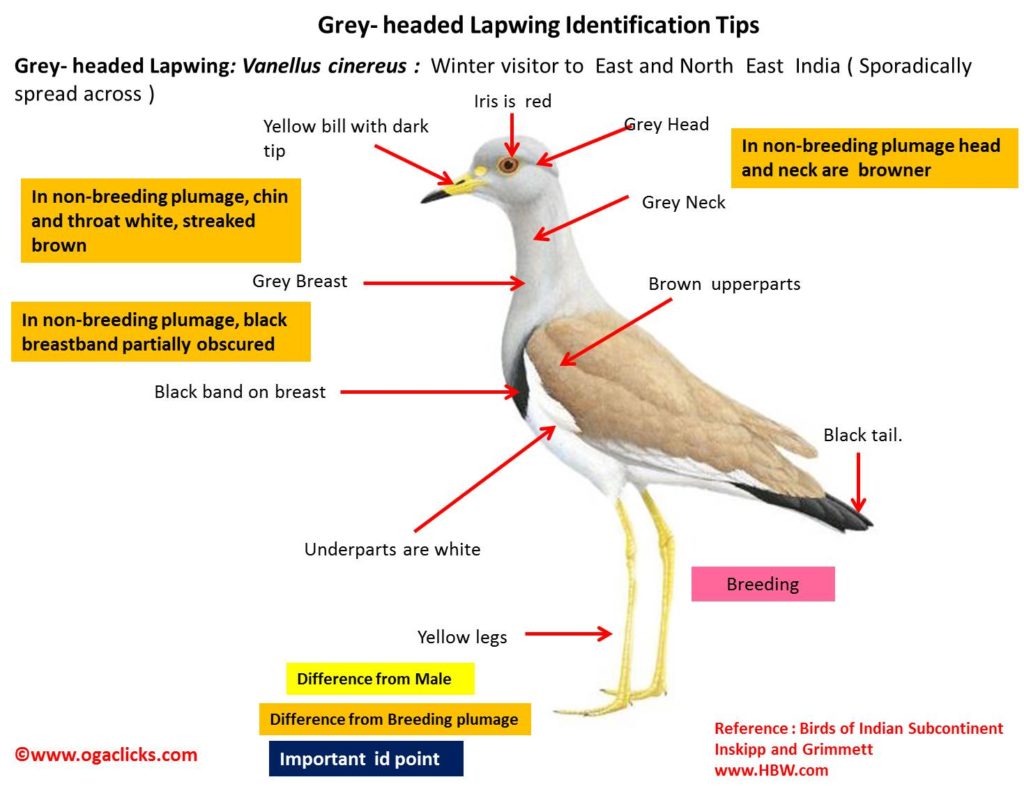
Grey- headed Lapwing Vanellus cinereus
Etymology :
- Vanellus : Latin word for fan like wings derived from vannus –winnowing fan
- Cinereus : Latin word for Ashy-grey derived from cineris-
Vernacular names: Mani: Salang, Mar: Rakhi Dokyachi Titavi
Distribution in India: Widespread winter visitor in East India and sporadic winter visitor throughout India.
Description: Size of 34–37 cm; wt. of 236–296 g; wingspan of 75–76 cm. it is a large, rather plain lapwing with head, neck and upper breast as grey, black breastband, brown upperparts and white belly. The secondaries and greater upperwing-coverts are white, primaries are black. The tail is white with black tip; iris is red, bill is yellow with black tip, legs are yellow. In flight, upperwing pattern looks like Sociable lapwing, but black in primaries and brown coverts are separated by white feathering. Both the sexes are alike. The non-breeding adult has browner head and neck, black breastband partially obscured; chin and throat are white, streaked brown. Juvenile has brown head and neck; breastband is absent or obscure; extensively fringed buff on upperparts
Habitats: It breeds in undisturbed areas in swamps, near rivers and rice fields. In winter it is also found in other wet habitats, like marshes, riverbanks, wet grassland, rice stubble, jheels; also ploughed fields. It is found below 1300 m.
Food Habits: It eats insects, worms and molluscs. It often wades in water while foraging. It is gregarious, especially in winter.
Breeding habits: Breeding season is Mar–Apr in Japan. They are monogamous and territorial. They breed in undisturbed wetlands, e.g. river flats; also in rice fields. The nest is a scrape, often lined with twigs. They lay a clutch of four eggs. The incubation period is 28–29 days. The nest predators include Carrion Crows, raptors and domestic dogs, among others, while farming practices also seriously affect breeding success